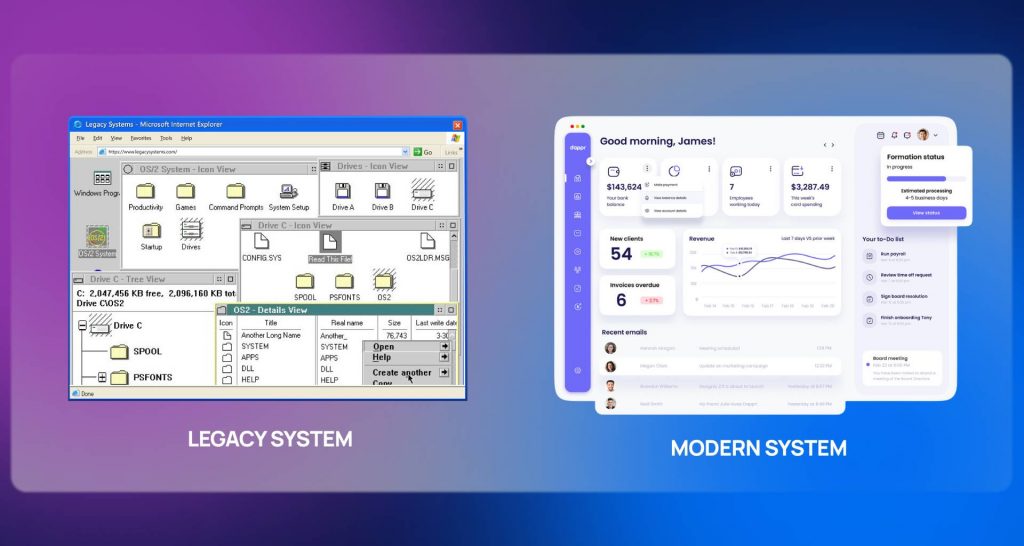- Who We Are
- What We Do
-
-
- Our Services
Industry Expertise
-
Business Functions
Technology
SaaS
-
-
- Insights
- Working at SELISE
- Contact Us
- EN
- DE
en
- EN
- DE

Integrating legacy system applications enable businesses to achieve automation, data integration, back and forth system communications, and shortening turnaround times, speeding up the entire system to enhance productivity. Having an integrated ecosystem will only accelerate the service process, ensure customer satisfaction, increase upselling and secure your bank into the future.
Data synchronization between legacy and new system can be achieved through a message-based two-way system that queues updates, but implementing this often requires feature development in the legacy system that companies may resist or find technically unfeasible.
For example, insurance self- service, when a user updates contract details, this information can usually be pushed to the legacy policy management system at the end of the day, without causing any disruption. As long as the self-service app reflects the update, the user experience remains seamless. However, when it comes to premium payments, real-time synchronization is crucial. Any delay could impact late payment fees, which are calculated by the core system. In this case, a message-based synchronization system ensures payment data is updated instantly while reducing system load.

Head of Insurance & Banking (Customer Success)
Email: info@selise.ch
Contact Number: +49 89 54196883